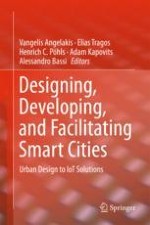This book discusses how smart cities strive to deploy and interconnect infrastructures and services to guarantee that authorities and citizens have access to reliable and global customized services. The book addresses the wide range of topics present in the design, development and running of smart cities, ranging from big data management, Internet of Things, and sustainable urban planning. The authors cover - from concept to practice – both the technical aspects of smart cities enabled primarily by the Internet of Things and the socio-economic motivations and impacts of smart city development. The reader will find smart city deployment motivations, technological enablers and solutions, as well as state of the art cases of smart city implementations and services.
· Provides a single compendium of the technological, political, and social aspects of smart cities;
· Discusses how the successful deployment of smart Cities requires a unified infrastructure to support the diverse set of applications that can be used towards urban development;
· Addresses design, development and running of smart cities, including big data management and Internet of Things applications.
